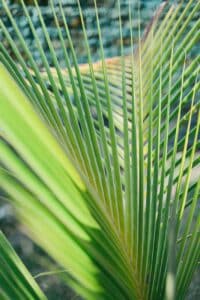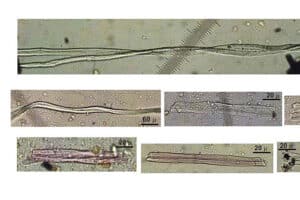Written By: Allison Goins, Ph.D. | Published On: December 1st, 2020 | Updated on January 9th, 2024
There is literally nothing on this earth that does not fall into a group of materials. Even things that are naturally occurring belong to the materials science subgrouping, natural materials.
The Earth’s bounty extends far beyond what meets the eye and natural materials are everywhere. From the towering redwoods to the shimmering seashells, everything around us can be neatly categorized into a group of natural materials. This vast, diverse realm is so prevalent in materials science, a field that unravels the secrets of matter and unlocks its potential across countless applications. Whether we’re constructing bridges, designing medical implants, or simply appreciating the intricate patterns of a spiderweb, a deeper understanding of materials lays the foundation for endless possibilities.
About The Author: Allison has a Ph.D. in materials science and engineering, with a particular focus on tissue engineering and regenerative medicine. Her passion for materials science stems from its presence all around us in our everyday lives. Her research delves into the relationships between material properties, function, and biological response. Driven by a commitment to education and outreach, she actively shares her knowledge with a broad audience, from academic peers to science enthusiasts like yourself.
Basic Definition of Natural Materials
The first sub-grouping of materials that we are going to talk about are natural materials. Natural materials are any product or physical matter that comes from plants, animals, or the Earth.
Any material taken from the Earth falls into the natural material classification. Natural materials can be biotic or inorganic.
What is A Biotic Material?

Photo by Ksenia Chernaya on Pexels.com
A biotic material is a material that originates from a living organism. More specifically, biotic materials are any materials that contain carbon and are capable of decay. One of the methods that can be used to date biotic materials is carbon dating.
Types of Biotic Natural Materials
Biotic natural materials can be divided further into several sub-categories.
Plant Fibers

Photo by Evgenia Basyrova on Pexels.com
Some examples of plant fibers are coconut fibers, bamboo, straw or barley, and even leaf fibers from plants like bananas or pineapples.
Animal Hairs

Photo by Pavel Danilyuk on Pexels.com
Examples of animal hairs are wool from sheep, alpaca, or goats. Likewise, silk fibers. Silk fibers are not only made by silkworm, but actually any natural fiber that is secreted by glands of insects that usually form cocoons. And then lastly, avian fibers like bird feathers.
Natural Polymers

Photo by Ankit Bhattacharjee on Pexels.com
And while the animal fiber grouping might seem abundant, it is actually collagen, which we talked about in a previous video, that takes the number one spot, and then another natural polymer name chitosan that takes the number two spot.
Chitosan is naturally occurring. It is found in plant cell walls and exoskeletons of insects and bugs. Chitosan is often purified into another form, called chitin. Both chitosan and chitin are used in the food processing industry for texture. It is also used as biodegradable material for tissue regeneration.
What is An Inorganic Material?

Photo by Karolina Grabowska on Pexels.com
An inorganic material is a material that comes from a mineral or metal. In contrast to biotic materials, inorganic materials are substantially more stable and usually last for years and years without changes to their chemical makeup.
History of Natural Materials

Image by Petr Novák, Wikipedia
Scientists date the first use of an inorganic material back to clay. Chemically clay is classified as a ceramic material; however, it is also a natural material because it comes from the Earth.
The first use of clay was dated to approximately 24000 BC in Chezkosolvokia. Archaeologists discovered figurines made from clay. When these clay figurines were discovered, researchers identified small indentations that were remnants of natural fibers.
At the time, the discovery in Dolni Vestonice, Czech Republic marked the oldest evidence of a biotic and inorganic natural material.

Image from Harvard Gazette
However, in 2009, a discovery was made. In the republic of Georgia, the earliest use of biotic natural materials by humans was discovered. Dating all the way back to approximately 36,000 BC. The fibers were flax fibers, most likely to make clothing or blankets.
They could not recover whole pieces due to degradation, but they identified several fibers under a microscope.
Applications of Natural Materials
Natural materials are everywhere. Due to their unique, origin properties, they are many applications for them. From clothing and household items to industrial fabrics and jewelry natural materials are used in many different places.

1 Comment